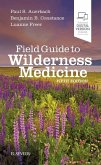High Altitude Physiology and Medicine
Herausgegeben:Brendel, W.; Zink, R. A.
High Altitude Physiology and Medicine
Herausgegeben:Brendel, W.; Zink, R. A.
- Broschiertes Buch
- Merkliste
- Auf die Merkliste
- Bewerten Bewerten
- Teilen
- Produkt teilen
- Produkterinnerung
- Produkterinnerung
High altitude physiology and medicine has again become important. The excep tional achievements of mountaineers who have climbed nearly all peaks over 8,000 m without breathing equipment raise the question of maximal adaptation ca pacity of man to low oxygen pressures. More importantly, the increase in tourism in the Andes and the Himalayas brings over 10,000 people to sites at altitudes above 4,000 and 5,000 m each year. At such heights several kinds of high alti tude diseases are likely to occur, and these complications require detailed medical investigations. Medical authorities need to…mehr
Andere Kunden interessierten sich auch für
![High Altitude Medicine High Altitude Medicine]() High Altitude Medicine105,99 €
High Altitude Medicine105,99 €![High Altitude Sickness ¿ Solutions from Genomics, Proteomics and Antioxidant Interventions High Altitude Sickness ¿ Solutions from Genomics, Proteomics and Antioxidant Interventions]() High Altitude Sickness ¿ Solutions from Genomics, Proteomics and Antioxidant Interventions125,99 €
High Altitude Sickness ¿ Solutions from Genomics, Proteomics and Antioxidant Interventions125,99 €![High Altitude Sickness ¿ Solutions from Genomics, Proteomics and Antioxidant Interventions High Altitude Sickness ¿ Solutions from Genomics, Proteomics and Antioxidant Interventions]() High Altitude Sickness ¿ Solutions from Genomics, Proteomics and Antioxidant Interventions125,99 €
High Altitude Sickness ¿ Solutions from Genomics, Proteomics and Antioxidant Interventions125,99 €![Biological Rhythms and Medicine Biological Rhythms and Medicine]() A. ReinbergBiological Rhythms and Medicine77,99 €
A. ReinbergBiological Rhythms and Medicine77,99 €![HUMAN ADAPTATION TO HIGH ALTITUDE AND TO SEA LEVEL HUMAN ADAPTATION TO HIGH ALTITUDE AND TO SEA LEVEL]() Gustavo Zubieta-CallejaHUMAN ADAPTATION TO HIGH ALTITUDE AND TO SEA LEVEL32,99 €
Gustavo Zubieta-CallejaHUMAN ADAPTATION TO HIGH ALTITUDE AND TO SEA LEVEL32,99 €![Tissue Nutrition and Viability Tissue Nutrition and Viability]() Tissue Nutrition and Viability77,99 €
Tissue Nutrition and Viability77,99 €![Field Guide to Wilderness Medicine Field Guide to Wilderness Medicine]() Paul S. AuerbachField Guide to Wilderness Medicine41,99 €
Paul S. AuerbachField Guide to Wilderness Medicine41,99 €-
-
-
High altitude physiology and medicine has again become important. The excep tional achievements of mountaineers who have climbed nearly all peaks over 8,000 m without breathing equipment raise the question of maximal adaptation ca pacity of man to low oxygen pressures. More importantly, the increase in tourism in the Andes and the Himalayas brings over 10,000 people to sites at altitudes above 4,000 and 5,000 m each year. At such heights several kinds of high alti tude diseases are likely to occur, and these complications require detailed medical investigations. Medical authorities need to inform both mountaineers and tourists as to how great a physical burden can be taken in the mountain environment without risk to health. Physicians need to know what kind of prophylaxis is to be employed at high altitudes to prevent the development of diseases and what therapeutic measures should be used once high altitude diseases have occurred. Moreover, the physical condition of the indigenous population living at higher altitudes such as the Andes and the Himalayas, who are exposed continuously to the stress of high altitude, requires our attention. We have become familiar with symptoms characteristic of chronic high-altitude disease: under special conditions this popu lation has a tendency to develop pulmonary hypertension, which is associated with pulmonary edema, pulmonary congestion, and right heart failure.
Produktdetails
- Produktdetails
- Topics in Environmental Physiology and Medicine
- Verlag: Springer / Springer New York / Springer, Berlin
- Artikelnr. des Verlages: 978-1-4612-5641-0
- Softcover reprint of the original 1st ed. 1982
- Seitenzahl: 340
- Erscheinungstermin: 3. Oktober 2011
- Englisch
- Abmessung: 254mm x 178mm x 19mm
- Gewicht: 641g
- ISBN-13: 9781461256410
- ISBN-10: 1461256410
- Artikelnr.: 39511891
- Topics in Environmental Physiology and Medicine
- Verlag: Springer / Springer New York / Springer, Berlin
- Artikelnr. des Verlages: 978-1-4612-5641-0
- Softcover reprint of the original 1st ed. 1982
- Seitenzahl: 340
- Erscheinungstermin: 3. Oktober 2011
- Englisch
- Abmessung: 254mm x 178mm x 19mm
- Gewicht: 641g
- ISBN-13: 9781461256410
- ISBN-10: 1461256410
- Artikelnr.: 39511891
I: Physiology of Adaptation.- Oxygen Uptake in the Lungs.- 1. Sleep Hypoxemia at Altitude.- 2. O2 Breathing at Altitude: Effects on Maximal Performance.- 3. Oxygen Uptake at High Altitude: Limiting Role of Diffusion in Lungs.- 4. Respiratory and Cardiocirculatory Responses of Acclimatization of High Altitude Natives (La Paz, 3500 m) to Tropical Lowland (Santa Cruz, 420 m).- 5. Chemoreflex Ventilatory Responses at Sea Level in Subjects with Past History of Good Acclimatization and Severe Acute Mountain Sickness.- 6. Dysoxia (Abnormal Cell O2 Metabolism) and High Altitude Exposure.- Oxygen Affinity and Oxygen Unloading.- 7. Minimal $${{text{P}}_{{O_2}}}$$in Working and Resting Tissues.- 8. Effects of High Altitude (Low Arterial $${{text{P}}_{{O_2}}}$$) and of Displacements of the Oxygen Dissociation Curve of Blood on Peripheral O2 Extraction and $${{text{P}}_{{O_2}}}$$.- 9. Influence of the Position of the Oxygen Dissociation Curve on the Oxygen Supply to Tissues.- 10. Carbon Dioxide and Oxygen Dissociation Curves During and After a Stay at Moderate Altitude.- Hypoxia and Anaerobic Metabolism.- 11. Ventilatory, Circulatory, and Metabolic Mechanisms During Muscular Exercise at High Altitude (La Paz, 3500 m).- 12. The Effects of Hypoxia on Maximal Anaerobic Alactic Power in Man.- 13. Anaerobic Metabolism at High Altitude: The Lactacid Mechanism.- 14. Oxygen Deficit and Debt in Submaximal Exercise at Sea Level and High Altitude.- Flow Distribution and Oxygen Transport.- 15. Blood Rheology in Hemoconcentration.- 16. Oxygen Transport Capacity.- 17. Skeletal Muscle Perfusion, Exercise Capacity, and the Optimal Hematocrit.- 18. Cardiac Output and Regional Blood Flows in Altitude Residents.- 19. The Pulmonary Circulation of High Altitude Natives.- 20. Comparison Between Newcomer Rats and First Generation of Rats Born at High Altitude, Particularly Concerning the Oxygen Supply to the Heart.- 21. Circulatory Flow of Oxygen Returning to the Lung During Submaximal Exercise in Altitude Residents.- 22. Effect of the ?-Adrenergic Blocking Agent Phentolamine (Regitine) on Acute Hypoxic Pulmonary Hypertension in Awake Dogs.- Hormonal, Hematologic, and Electrolyte Changes.- 23. Hormonal Responses to Exercise at Altitude in Sea Level and Mountain Man.- 24. Time Course of Plasma Growth Hormone During Exercise in Man at Altitude.- 25. Transcapillary Escape Rate of Albumin After Exposure to 4300 m.- 26. Platelet Survival and Sequestration in the Lung at Altitude.- 27. Electrolyte Changes in the Blood and Urine of High Altitude Climbers.- 28. The Influence of Trekking on Some Hematologic Parameters and Urine Production.- II: Disturbances Due to High Altitude and Therapy of High Altitude Complaints.- Cerebral and Ophthalmologic Changes.- 29. High Altitude Complaints, Diseases, and Accidents in Himalayan High Altitude Expeditions (1946-1978).- 30. Cerebral Edema: The Influence of Hypoxia and Impaired Microcirculation.- 31. Physiologic Adaptation to Altitude and Hyperexis.- 32. Eye Problems at High Altitudes.- 33. Cotton-Wool Spots: A New Addition to High Altitude Retinopathy.- High Altitude Pulmonary Edema.- 34. High Altitude Pulmonary Edema: Analysis of 166 Cases.- 35. Hemodynamic Study of High Altitude Pulmonary Edema (12,200 ft).- 36. Pathogenesis of High Altitude Pulmonary Edema (HAPE).- 37. Subclinical Pulmonary Edema with Hypobaric Hypoxia.- 38. Mechanism of Pulmonary Edema Following Uneven Pulmonary Artery Obstruction and Its Relationship to High Altitude Lung Injury.- 39. Vasopressin in Acute Mountain Sickness and High Altitude Pulmonary Edema.-40. Hypoxic Pulmonary Vasoconstriction and Ambient Temperature.- 41. Pathophysiology of Acute Mountain Sickness and High Altitude Pulmonary Edema: An Hypothesis.- 42. Use of Furosemide in Prevention of HAPE.- Chronic Mountain Sickness and Performance.- 43. Chronic Mountain Sickness: A Pulmonary Vascular Disease?.- 44. Predicting Mountaineering Performance at Great Altitudes.- 45. Effect of Ambient Temperature, Age, Sex, and Drugs on Survival Rate of Rats.- High Altitude Expeditions.- 46. Hemodilution: Practical Experiences in High Altitude Expeditions.- 47. How to Stay Healthy While Climbing Mount Everest.- 48. Proposals for International Standardization in the Research and Documentation of High Altitude Medicine.- 49. Equipment Requirements for High-Altitude Studies (Personal Experiences).
I: Physiology of Adaptation.- Oxygen Uptake in the Lungs.- 1. Sleep Hypoxemia at Altitude.- 2. O2 Breathing at Altitude: Effects on Maximal Performance.- 3. Oxygen Uptake at High Altitude: Limiting Role of Diffusion in Lungs.- 4. Respiratory and Cardiocirculatory Responses of Acclimatization of High Altitude Natives (La Paz, 3500 m) to Tropical Lowland (Santa Cruz, 420 m).- 5. Chemoreflex Ventilatory Responses at Sea Level in Subjects with Past History of Good Acclimatization and Severe Acute Mountain Sickness.- 6. Dysoxia (Abnormal Cell O2 Metabolism) and High Altitude Exposure.- Oxygen Affinity and Oxygen Unloading.- 7. Minimal $${{text{P}}_{{O_2}}}$$in Working and Resting Tissues.- 8. Effects of High Altitude (Low Arterial $${{text{P}}_{{O_2}}}$$) and of Displacements of the Oxygen Dissociation Curve of Blood on Peripheral O2 Extraction and $${{text{P}}_{{O_2}}}$$.- 9. Influence of the Position of the Oxygen Dissociation Curve on the Oxygen Supply to Tissues.- 10. Carbon Dioxide and Oxygen Dissociation Curves During and After a Stay at Moderate Altitude.- Hypoxia and Anaerobic Metabolism.- 11. Ventilatory, Circulatory, and Metabolic Mechanisms During Muscular Exercise at High Altitude (La Paz, 3500 m).- 12. The Effects of Hypoxia on Maximal Anaerobic Alactic Power in Man.- 13. Anaerobic Metabolism at High Altitude: The Lactacid Mechanism.- 14. Oxygen Deficit and Debt in Submaximal Exercise at Sea Level and High Altitude.- Flow Distribution and Oxygen Transport.- 15. Blood Rheology in Hemoconcentration.- 16. Oxygen Transport Capacity.- 17. Skeletal Muscle Perfusion, Exercise Capacity, and the Optimal Hematocrit.- 18. Cardiac Output and Regional Blood Flows in Altitude Residents.- 19. The Pulmonary Circulation of High Altitude Natives.- 20. Comparison Between Newcomer Rats and First Generation of Rats Born at High Altitude, Particularly Concerning the Oxygen Supply to the Heart.- 21. Circulatory Flow of Oxygen Returning to the Lung During Submaximal Exercise in Altitude Residents.- 22. Effect of the ?-Adrenergic Blocking Agent Phentolamine (Regitine) on Acute Hypoxic Pulmonary Hypertension in Awake Dogs.- Hormonal, Hematologic, and Electrolyte Changes.- 23. Hormonal Responses to Exercise at Altitude in Sea Level and Mountain Man.- 24. Time Course of Plasma Growth Hormone During Exercise in Man at Altitude.- 25. Transcapillary Escape Rate of Albumin After Exposure to 4300 m.- 26. Platelet Survival and Sequestration in the Lung at Altitude.- 27. Electrolyte Changes in the Blood and Urine of High Altitude Climbers.- 28. The Influence of Trekking on Some Hematologic Parameters and Urine Production.- II: Disturbances Due to High Altitude and Therapy of High Altitude Complaints.- Cerebral and Ophthalmologic Changes.- 29. High Altitude Complaints, Diseases, and Accidents in Himalayan High Altitude Expeditions (1946-1978).- 30. Cerebral Edema: The Influence of Hypoxia and Impaired Microcirculation.- 31. Physiologic Adaptation to Altitude and Hyperexis.- 32. Eye Problems at High Altitudes.- 33. Cotton-Wool Spots: A New Addition to High Altitude Retinopathy.- High Altitude Pulmonary Edema.- 34. High Altitude Pulmonary Edema: Analysis of 166 Cases.- 35. Hemodynamic Study of High Altitude Pulmonary Edema (12,200 ft).- 36. Pathogenesis of High Altitude Pulmonary Edema (HAPE).- 37. Subclinical Pulmonary Edema with Hypobaric Hypoxia.- 38. Mechanism of Pulmonary Edema Following Uneven Pulmonary Artery Obstruction and Its Relationship to High Altitude Lung Injury.- 39. Vasopressin in Acute Mountain Sickness and High Altitude Pulmonary Edema.-40. Hypoxic Pulmonary Vasoconstriction and Ambient Temperature.- 41. Pathophysiology of Acute Mountain Sickness and High Altitude Pulmonary Edema: An Hypothesis.- 42. Use of Furosemide in Prevention of HAPE.- Chronic Mountain Sickness and Performance.- 43. Chronic Mountain Sickness: A Pulmonary Vascular Disease?.- 44. Predicting Mountaineering Performance at Great Altitudes.- 45. Effect of Ambient Temperature, Age, Sex, and Drugs on Survival Rate of Rats.- High Altitude Expeditions.- 46. Hemodilution: Practical Experiences in High Altitude Expeditions.- 47. How to Stay Healthy While Climbing Mount Everest.- 48. Proposals for International Standardization in the Research and Documentation of High Altitude Medicine.- 49. Equipment Requirements for High-Altitude Studies (Personal Experiences).








